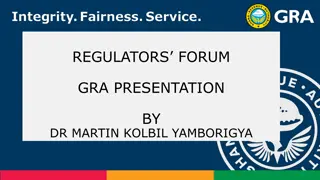
Behavioral Interventions and Motivational Techniques
Explore the organized classification of motivational behavior change techniques based on Self-Determination Theory. Learn about the strategies, considerations, and factors involved in designing behavioral interventions to promote desired behavior change for better health outcomes.
Download Presentation

Please find below an Image/Link to download the presentation.
The content on the website is provided AS IS for your information and personal use only. It may not be sold, licensed, or shared on other websites without obtaining consent from the author. If you encounter any issues during the download, it is possible that the publisher has removed the file from their server.
You are allowed to download the files provided on this website for personal or commercial use, subject to the condition that they are used lawfully. All files are the property of their respective owners.
The content on the website is provided AS IS for your information and personal use only. It may not be sold, licensed, or shared on other websites without obtaining consent from the author.
E N D
Presentation Transcript
Changing Behaviour Using Self Determination Theory: An Organized Classification of Motivational Behaviour Change Techniques Martin S. Hagger Curtin University & University of Jyv skyl
Outline Behavioural interventions Considerations when designing interventions How behavioural interventions work Behaviour change techniques (BCTs) and taxonomies A taxonomy of motivational and behaviour change techniques (MBCTs) Self-determination theory Expert consensus study The collection of MBCTs
Behavioural Scientists Behavioural scientists aim to: Conduct basic research to provide an evidence base of the influential factors ( antecedents ) related to health behaviour and Develop methodsor behavioural techniques to manipulate the factors and change health behaviour Interested in getting people to change by themselves for themselves: self-regulation
What is a Behavioural Intervention? Strategy or initiative aimed at promoting change in behaviour of an individual or group to attain some sort of adaptive or beneficial outcome Important features Content Delivery Evaluation/effectiveness Sustainability
Behavioural Interventions: Considerations What is the problem that necessitates change? Who needs to change? What behaviours need to change? What change mechanisms need to be activated? What behaviour change techniques/strategies are needed to activate behaviour change?
The Problem Growing problem of behaviour-related chronic non-communicable illnesses and conditions Cardiovascular disease Diabetes Obesity Preventable illnesses with epidemiological research linked to Low levels of physical activity Diet high in energy and saturated fat
Behavioural Interventions: Considerations What is the problem that necessitates change? Who needs to change? What behaviours need to change? What change mechanisms need to be activated? What behaviour change techniques/strategies are needed to activate behaviour change?
Behavioural Interventions: Considerations What is the problem that necessitates change? Who needs to change? What behaviours need to change? What change mechanisms need to be activated? What behaviour change techniques/strategies are needed to activate behaviour change?
What Behaviours Need to Change? Engaging in a suite of four healthy behaviors (not smoking, healthy diet, adequate physical activity, and moderate alcohol consumption) is associated with an estimated 11 to 14 year delay in all- cause mortality (Ford, Zhao, Tsai, & Li, 2011; Khaw et al., 2008)
Behavioural Interventions: Considerations What is the problem that necessitates change? Who needs to change? What behaviours need to change? What change mechanisms need to be activated? What behaviour change techniques/strategies are needed to activate behaviour change?
Effective Behaviour Change Successful behavioural interventions Use theory in intervention design Target cognitive and behavioural constructs Target social influences e.g. norms Train those delivering the intervention Include multiple components Peters et al. (2009). BMC Public Health, 9: 182 doi: 10.1186/1471-2458-9-182
Role of Theory Answering the what and how questions Behavioral theory helps develop and understanding of The personal and social factors ( what ) e.g., attitudes, self-efficacy, intentions/motives The mechanisms responsible ( how ) mediation and moderation The targets ripe for intervention what do we have to change to bring about change?
Typical Theories: Boxes and Arrows! Attitudes Social Norms Intentions Behaviour Self- Efficacy Risk Perceptions Sources: Fishbein, M., & Ajzen, I. (2009). Predicting and changing behavior: The reasoned action approach. New York, NY: Psychology Press. Hagger, M. S., Polet, J., & Lintunen, T. (2018). The reasoned action approach applied to health behavior. Social Science & Medicine, 213, 85-94. doi: 10.1016/j.socscimed.2018.07.038
Behavioural Interventions: Considerations What is the problem that necessitates change? Who needs to change? What behaviours need to change? What change mechanisms need to be activated? What behaviour change techniques/strategies are needed to activate behaviour change?
How to Behavioural Interventions Work? A Basic Process Model Change method or technique Psychological mediator Behaviour Outcome Hagger & Conroy (2019). In: Handbook of Behaviour Change. Cambridge, UK: Cambridge University Press, forthcoming.
Behaviour Change Techniques What is a behaviour change technique? Techniques or processes that have been shown to be able to change one or more determinants of behaviour (Kok et al., 2016, p. 299) Provides a toolbox that most efficiently enables planners to select the method that fits their circumstances (Kok et al., 2016, p. 304)
Behaviour Change Techniques Active ingredients of behaviour change interventions They do the work in changing behaviour They are irreducible and unique in that they cannot be broken down further and are separate from others Could be seen as the tools in a behaviour change toolbox Can be used independently or in conjunction with others
Behaviour Change Taxonomy Structured organisation of unique techniques that make up behavioural interventions The need for a common vocabulary in terms of which content components of behaviour change interventions can be defined and described (Abraham & Michie, 2008, p. 380) Analogy: Mapping the genome of behaviour change interventions
Mapping the Genome of Behavioural Interventions Intervention content Changing beliefs Changing risk perceptions Changing feelings Changing norms Promote positive identity Promote self- efficacy Promote goal setting Enhance social skills Change environ Emphasise suscept. Promote success experience Prompt mental rehearsal Prompt goal setting Resisting social pressure General information Others approval Use cues/ prompts Describe conseq. Arouse fear Prompt role Set graded goals Provide feedback
BCT Taxonomies General taxonomies of BCTs (Michie et al., 2013; Kok et al., 2016) Physical activity and dieting behaviour CALO-RE (Michie, Ashford, Sniehotta, Dombrowski, Bishop, & French, 2011) Individual behavioural support for smoking cessation (Michie, Hyder, Walia, & West, 2011) Motivational interviewing (Hardcastle, Fortier, Blake, & Hagger, 2017)
Rationale Self-determination theory is a theory of human behaviour The theory of intrinsic motivation Focuses on quality as well as quantity of motivation for behaviour Psychological needs for autonomy, competence and relatedness are a key constructs Satisfaction of needs determines type of motivation Motivation can be autonomous or controlling Autonomous motivation consistently related to persistence on behaviour
Rationale Self-determination theory is increasingly used in behaviour change interventions No standard for what constitutes an self- determination theory -based intervention (large variability) Testing SDT mechanisms requires that intervention techniques target the relevant theory constructs effectively SDT techniques have not been included in existing taxonomies
Rationale Matching techniques with the SDT constructs/ processes they are expected to change Theoretical constructs Intervention techniques Articles with intervention techniques linked to a theoretical construct = 44% Group of techniques linked to a group of constructs = 61% = Room for improvement ! Sliva, Marques, & Teixeira (2011). European Health Psychologist, 16:171
Self-Determination Theory Need for Competence Need for Autonomy Need for Competence Type of Motivation Intrinsic Motivation Extrinsic Motivation Behavioural Regulation ( Motivation Style ) Intrinsic Motivation External regulation Identification Introjection For external reinforcement such as gaining rewards or avoiding punishment. For enjoyment, pleasure and fun, and no discernible reinforcement. For avoiding external sources, of disapproval (guilt) or gaining externally referenced approval (self-esteem) For personally- held values such as learning new skills, resulting in feelings of satisfaction Defining Features Position on Autonomy Continuum AUTONOMOUS MOTIVES (high autonomy) CONTROLLING MOTIVES (low autonomy)
Aim To identify, define, and classify the distinct individual components of SDT-based health interventions that are more likely to influence the key mechanisms of action underlying motivation and behavior change, according to SDT
Motivation and Behavior Change Techniques (MBCTs) Distinct, observable and replicable component of an intervention, designed to influence a person s behavior directly of indirectly by impacting the person s perceptions of autonomy, relatedness, and/or competence in relation to a particular behavior (or group of related behaviors) .
Example of an MBCT Label Definition MBCT2. Prompt identification of sources of pressure for behavior change Prompt identification of possible sources of external (or partially internalized) pressures and expectations, and explore how they may relate to client s desired goals and outcomes.
Participants 18 international leading researchers in SDT (11 men)with expertise in SDT-based health interventions for behavior change. Residents in UK (5), US (5), Australia (2), Belgium (2), Sweden (2), and South Korea (1). Backgrounds in Psychology, Medical Science, and Exercise and Nutrition.
Procedure Development of the first list of MBCTs Preliminary list of MBCTs derived from the content analysis of published SDT-based interventions (available at https://osf.io/hufpj/) and key literature (e.g. HCCQ, SONIPE Haerens et a 2013, Reeve et al 2011) Detailed definitions formulated and techniques grouped into SDT mechanisms of action (3 Needs) Iterative process - The core study team members (MM, MNS, PJT, & MSH) developed the first list of techniques, and were responsible for the feedback, discussion and refinement of the MBCTs between rounds
Procedure Round 1: Clarity and content of each MBCT. List of MBCTs refined by the core team members. Round 2: Online survey sent to 18 experts (including round 1) Specificity: Experts asked to rate the link between each MBCT and each of the three Needs Does this technique target AUT REL COMP? Essentiality / Importance: How essential is this technique in an SDT- based health intervention? Uniqueness: Are you satisfied that the MBCT is sufficiently unique in relation to others to justify being listed separately. Round 2: For all MBCTs where a consensus wasn t reached, experts were again asked about the specificity and uniqueness of those MBCTs For MBCTs added from Round 2, experts went through the same set of questions For details see OSF project: https://osf.io/f65jy/
Consensus Criteria MBCTs requiring further consideration (concerns flagged by at least 25% experts) MBCT did not target the theoretically hypothesized basic psychological need At least one of the other two needs was more strongly targeted by the MBCT MBCT not important in an SDT-based health intervention MBCT overlapped considerably with others
Results Detailed results available on the OSF site for the project: https://osf.io/f65jy/
Results from Round 1 Preliminary list of MBCTs 39 MBCTs Autonomy: 16 Relatedness: 10 Competence: 13 Refined list of MBCTs 24 MBCTs Autonomy: 8 Relatedness: 8 Competence: 8 Vague and overlapping techniques were eliminated/reformulated. A function was added to each MBCT. i.e. the purpose of the MBCT and link with basic psychological need
Results from Round 2 Specificity All MBCTs considered to target primary need. Some MBCTs targeted more than one need Essentiality / Importance All MBCTs were considered essential or important in SDT interventions Uniqueness / redundancy (with other MBCTs) Only six MBCTs were judged to be conceptually unique Experts focus on MBCTs in an intervention, rather than conceptual overlap In round 3, instructions for this section were improved. 1 MBCT removed 2 MBCTs added - Explore intrinsic rewards and Encourage the person to be supportive towards others with a similar condition
Results from Round 3 Specificity Some MBCTs from previous round were still judged as targeting both relatedness and autonomy Uniqueness / redundancy (with other MBCTs) The number of MBCTs judged to overlap with others decreased Final list of MBCTs 21 MBCTs Autonomy: 7 Relatedness: 7 Competence: 7 1 new MBCT removed Various MBCTs combined
Autonomy-support techniques MBCT1. Elicit perspectives on condition or behavior MBCT2. Prompt identification of sources of pressure for behavior change MBCT 3. Use non-controlling, informational language MBCT 4. Explore life aspirations and values MBCT 5.Provide a meaningful rationale MBCT 6.Provide choice MBCT 7. Encourage the person to experiment and self- initiate the behavior
Relatedness-support techniques MBCT 8. Acknowledge and respect perspectives and feelings MBCT 9. Encourage asking of questions MBCT 10. Show unconditional regard MBCT 11. Demonstrate/show interest in the person MBCT 12. Use empathic listening MBCT 13. Providing opportunities for ongoing support MBCT 14. Prompt identification and seek available social support
Competence-support techniques MBCT 15. Address obstacles for change MBCT 16. Clarify expectations MBCT 17. Assist in setting optimal challenge MBCT 18. Offer constructive, clear, and relevant feedback MBCT 19. Help develop a clear and concrete plan of action MBCT 20. Promote self-monitoring MBCT 21. Explore ways of dealing with pressure
How the list is presented Online version will have examples for each MBCT that can be regularly updated
Summary and Conclusions First formal attempt to systematize unique components of self-determination theory interventions Enhances consistency in descriptions of, and facilitate better synthesis of evidence for, self-determination theory-based interventions Guides research on the candidate mediators of interventions based on the theory, and inform future research isolating main and interactive effects of theory-based intervention components.
Thanks to the Expert Panel and Research Team Jennifer Brunet Joan Duda Martin Hagger Leen Haerens Jennifer La Guardia Magnus Lindwall Chris Londsdale David Markland Marta Marques Susan Michie Arlen Moller Nikos Ntoumanis Heather Patrick Johnmarshall Reeve Richard Ryan Simon Sebire Marlene Silva Martin Standage Pedro Teixeira Maarten Vansteenkiste Geoffrey Williams Netta Weinstein Karin Weman-Josefsson and Eliana Carra a and Jorge Encantado for their contribution to the data synthesis
Detailed results available in the OSF site for the project: https://osf.io/f65jy/
Thank yoU https://osf.io/f65jy/

















